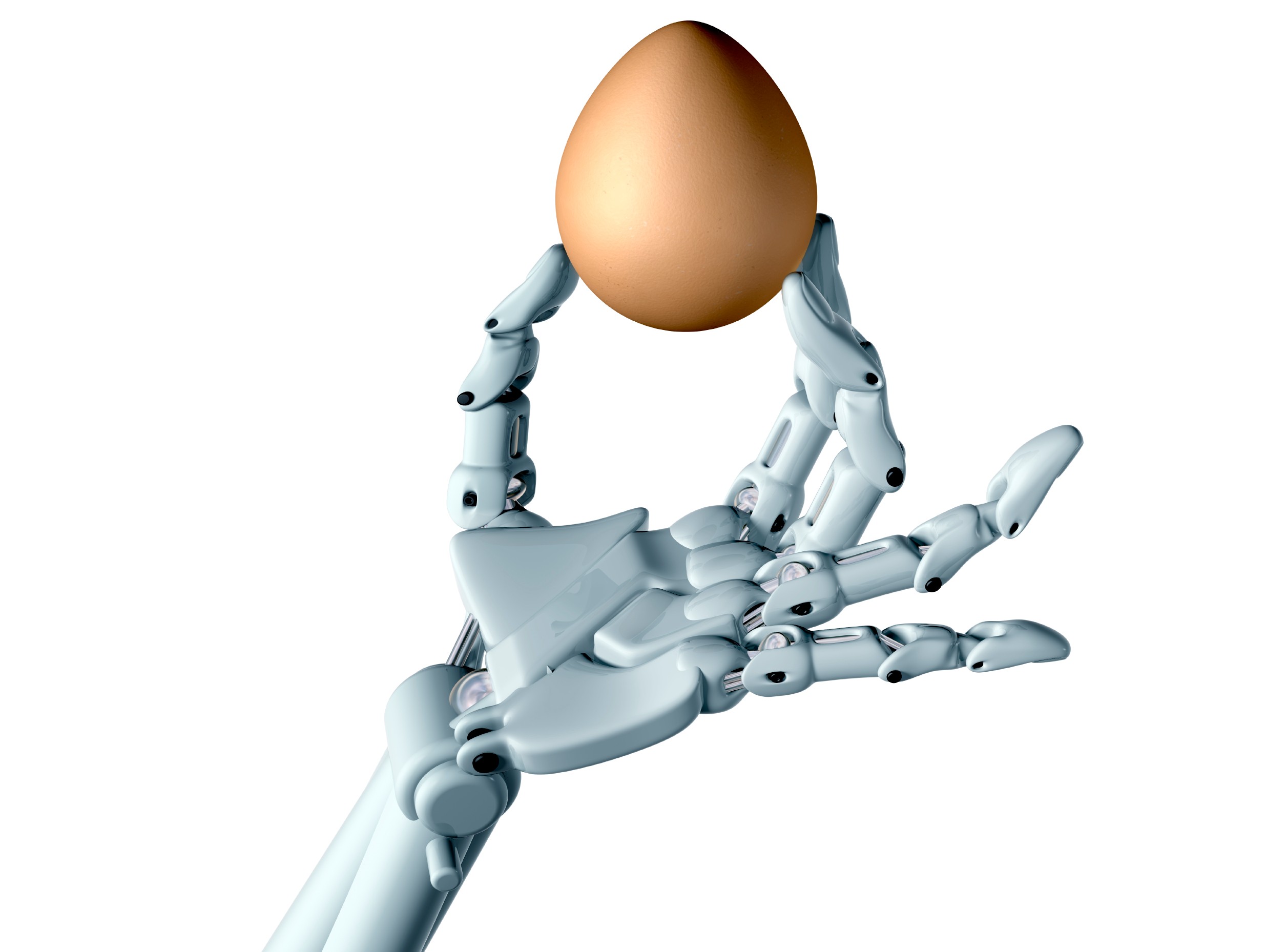
The pace of change in the food industry is fast. Trends follow one another in quick succession and the consumer is becoming increasingly demanding. Therefore, food production must be even more hygienic, efficient, cost-effective and intelligent than before. That can only be achieved with the help of far-reaching automation, digitisation, robotisation, integration and collaboration. Here, six suppliers discuss the challenges facing the food industry.
Our insatiable hunger for information has advanced beyond being a ‘desire’ and is now a requirement. In fact it could almost be called a basic need, alongside food and drink. Today’s consumers want to know literally everything about the background and composition of a product, and governments have made it compulsory for entrepreneurs to provide a mountain of information. Last year’s introduction of new labelling legislation sent shock waves through the entire food industry: how will all of that information fit onto one single label? Companies are now audited, checked, assessed. Judged. And if you don’t have everything under control or if something should nevertheless go wrong: mercilessly condemned. Needless to say, all this has an impact on the design and automation of the manufacturing activities.
“You can’t afford to make any mistakes nowadays. If you do, you’ll immediately suffer the consequences,” says Gerrit Tijhof, Commercial Director at Sismatec. “It makes the industry as a whole vulnerable; you have to eliminate all possible risks. That’s understandable, but it does create tension. In order to manage the risks, it’s essential that food manufacturers have continuous access to information about what’s happening where on the production line. By working in collaborative partnerships with robotics suppliers and embedding remote-control systems which enable remote access, we provide integrated lines that address that need.”
Jean-Marc Dagevos, owner of Estrategy which supplies 4FOOD ERP software, notes that the intensive need for information means that companies want to be able to analyse all the data any time and anywhere. “Even smaller manufacturers, who often still work with Excel, Word and Post-It notes, will have to make that switch. The pressure to be able to record and produce reliable data is increasing all the time. They are realising that office automation will strengthen their internal organisation. With the right administrative structures in place, the processes run more smoothly and unnecessary errors are avoided. It’s now impossible to stop the flow of smaller SMEs that are entering the food industry more professionally than ever before.”
Barry Wentink, Corporate Account Manager at Intralox: “Nowadays, very frequent audits are also conducted by meat, poultry and seafood processing companies as well as on behalf of their customers. That in turn is increasing the pressure on the day-to-day production activities, especially in terms of hygiene. Furthermore, the internal transport must be ever-faster and more flexible too. In response to this, Intralox is launching the new AIMTM Platform at the end of 2015. This is a new transport system which can handle, combine and sort TrayPack trays faster and more intelligently in an environment which is cleaned very intensively on a daily basis.”
Of course, information is not only provided because it is demanded from the top down by governments and from the bottom up by consumers. Gathering the right information about all the processes also helps the manufacturers themselves to gain full control of their production activities so that they know where things can be done more efficiently, cheaply, energy-efficiently and with less waste. Huub Sleegers, Director at machine builder Sleegers Technique B.V.: “Customers want less downtime and fewer employees, both in the production department and the cleaning department. You have to listen carefully to them. A customer doesn’t just want a solution to their problem; as a supplier, you have to go a step further. Add to that your vision and experience and you’ll arrive at wonderful innovations. For example, we recently supplied some fully automated hamburger lines in America which don’t require any human intervention at all.”
Arnaud Derrien, Manager Major Accounts Agro-Food at Stäubli (manufacturer of industrial robots) notes that the industrial production of food is placing increasing demands on robotics: “Especially when the machine comes into direct contact with food products, it’s necessary to comply with extremely stringent hygiene criteria and cleaning procedures. That requires robotics companies to demonstrate a lot of inventiveness and knowledge.”
In the meantime, consumers are increasingly (being made) aware of what’s in their food are what consitutes healthy eating. They are no longer brand loyal. Instead, they are choosing fresh and honest products and fresh produce from their own region. Food has become a way of demonstrating community spirit. They no longer buy in bulk, but rather pick up a few groceries as and when they need them. They want to be surprised and enjoy discovering something new each time. And all the online opportunities have also made us impatient; preferably, we want same-day delivery of our online orders. The food industry faces a major challenge in attempting to respond to this.
Robert Ruesen, Key Account Manager of Automation at Multivac, a leading provider of packaging solutions: “In many industries we’re seeing an increasing shift away from large inventories and towards customised products which are delivered directly. In the future, I expect to see a rise in orders for products that are manufactured on demand. For the food industry, this means that manufacturers will have to be able to perform faster changeovers on a line, for instance, so that they can produce smaller batches. To facilitate that, all the processes must be more agile and communicate with one another better. Evidently, all machines will then need to ‘speak the same language’.”
Arnaud Derrien (Stäubli): “The biggest challenges are projects which people regard as impossible. In terms of the application of robotics in a production process, it mainly comes down to flexibility in the types of tasks and to activities that can only be achieved with robotic systems because humans are not physically capable of performing them.”
In other words, the future appears to lie in flexible manufacturing, in being able to launch a broader and more diverse product offering at lightning speed and much more efficiently, without compromising on quality. Oh yes, and preferably with an authentic, ‘artisan’ feel.
Which decisions do food manufacturers need to make in order to keep pace with the developments described above? There’s already a clear shift from large to small players, on the one hand due to the increase in smaller niche manufacturers who are increasingly succeeding in getting their products listed in supermarkets, and on the other due to e-commerce gaining ground, which is enabling customer demand to become increasingly focused on specialist food products. Should manufacturers opt for extensive mono-lines in order to generate sufficient volume with a single product? Or should they focus on enabling faster and more frequent changeovers so that they can produce smaller batches? Or does the future lie in the hands of the small supplier who targets a specific niche?
“Robotisation, ease of use, control, and complete, integrated lines are very much the order of the day,” comments Gerrit Tijhof. “Flexibilisation is the biggest challenge. Our customers have to decide between more volume or smaller-scale production. It’s becoming more and more important to choose a niche in the food industry because, after all, you can only spend your money once. We’re seeing that big companies are choosing large, more efficient mono-lines so that volume compensates for the low margins, while SMEs are opting for our smaller, more flexible lines. Both options can exist happily alongside one another, but it’s difficult for the grey area in the middle.”
“The future looks brightest for companies that choose a niche,” agrees Robert Ruesen (Multivac). “People increasingly want customisation; the trend is towards individualisation. Before long your fridge will automatically be able to order a pint of milk, gluten-free bread or allergen-free deli meats. The industry needs to respond to that by switching from mass production to flexible production.”
“The 21st century will be the era of the SME,” predicts Jean-Marc Dagevos (Estrategy). “The consumer is looking for a very varied product offering. That’s difficult for large manufacturing companies to deliver, but SMEs are in a good position to capitalise on this need. It seems as if SMEs have been thinking long and hard and have finally plucked up the courage to take the step in the past few months. They are emerging as fully fledged partners for supermarkets, complete with EDI and track & trace systems.”
Individualisation demands customised production, and the need for information among consumers, governments and suppliers demands that data can be provided on the spot. We’re moving towards the Internet of Things: a world in which a growing number of everyday household appliances are connected together via the internet so that they can, for instance, order groceries for us. According to forecasts, 50 billion* devices will be connected to the Internet of Things by 2020. These developments will no doubt place even greater demands on processes, logistics and transparency in the near future. Suppliers are facing a major challenge. But it seems that the obstacles do not lie in the technological possibilities, but rather in overcoming fear. Arnaud Derrien: “When introducing robotisation within the food industry, we constantly have to reassure people that robots are not competing with humans. On the contrary: food manufacturers who opt for robotics can spend some of the extra cash flow generated on investing in their people.”
Jean-Marc Dagevos: “Humans should never let the system take over; you have to stay in ultimate control.”

The fact remains that it will come down to the people in the end, both in the food industry and elsewhere. The machines, the technology and the data management are ‘merely’ the tools. Making the right choices calls for vision and common sense – things that the robots don’t (yet) have, luckily. “You can’t replace common sense with automation, but common sense can lead to automation,” concludes Gerrit Tijhof.
Source: ©Image licensed by SignBiblio / robothand: ©iStock/PaulFleet